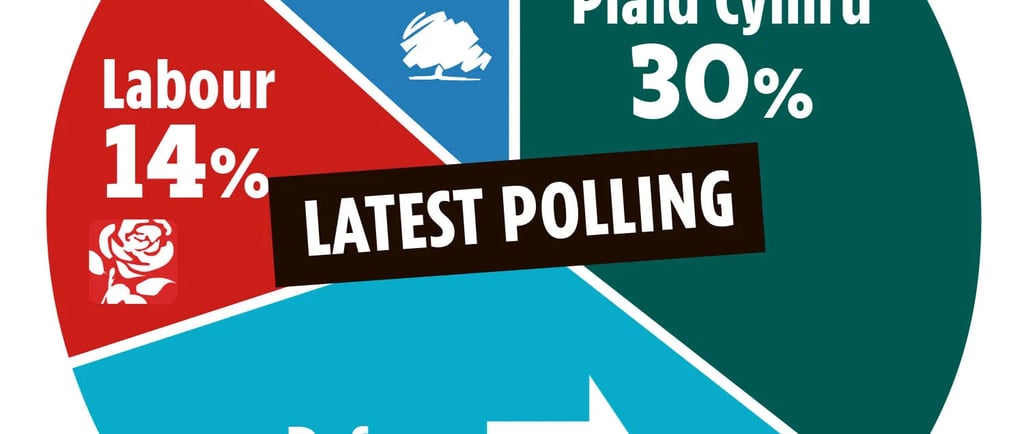Caerphilly’s By‑Election: What Happened, Why It Matters, and What It Could Mean for Blaenau Gwent in 2026!
This pivotal contest, triggered by the passing of Labour MS Hefin David, is more than just a local race; it's a crucial barometer for the 2026 Senedd elections. There is a shifting political landscape, polling data hinting at a tight competition between Labour, Plaid Cymru, and Reform UK. This could profoundly impact the newly formed Blaenau Gwent Caerffili Rhymni constituency. I'll explain how electoral reforms will reshape representation and why your vote matters now more than ever.
Jonathan Millard
10/8/20253 min read


Caerphilly is heading to the polls on 23 October 2025 to elect a new Member of the Senedd (MS), following the sudden death of Hefin David. This is the last Senedd by‑election before Wales’ voting system changes in 2026, and it’s being watched as a bellwether for Welsh politics. Polls up to today suggest an unusually close race that could ripple into the new Blaenau Gwent Caerffili Rhymni constituency next year.
Note: The vote hasn’t happened yet; official results are due early on 24 October. This piece sets out the state of play, the scenarios, and why it matters locally and across the Valleys.
Where the race stands now
Date and logistics: Polling day is Thu 23 Oct; polls 7 am–10 pm. Registration closed 7 Oct; postal vote deadline was 8 Oct.
Candidates include Labour (Richard Tunnicliffe), Plaid Cymru (Lindsay Whittle), Reform UK (Llŷr Powell), Conservatives (Gareth Potter), Lib Dems (Steve Aicheler), Greens (Gareth Hughes), Gwlad (Anthony Cook), UKIP (Roger Quilliam). BBC,
Polling and mood: Multiple reports and commentary point to a tight three‑way dynamic with Plaid Cymru and Reform UK pressing Labour hard—an extraordinary situation in what has been a Labour stronghold. Analysts have described Caerphilly as a “canary in the coalmine” for wider change.
What to watch on the night:
If Plaid wins: expect a narrative of a resurgent Plaid in the Valleys and a direct challenge to Labour in 2026.
If Reform wins or runs very close: that would confirm a right‑populist foothold in parts of South Wales, reshaping how parties build their lists next year.
If Labour holds narrowly: Labour stabilises, but the result still signals a far more competitive map in 2026.
Why does Caerphilly affect Blaenau Gwent next year
From 2026, Caerphilly and Blaenau Gwent sit together in a new six‑member super‑constituency called Blaenau Gwent Caerffili Rhymni. That means the political winds in Caerphilly today could shape the list seats across the whole combined area tomorrow.
Implications for Blaenau Gwent:
Voter coalitions: If Plaid or Reform consolidate votes in Caerphilly now, expect both to target the combined Valleys list vigorously. Blaenau Gwent voters will be pivotal to who picks up the 4th–6th seats.
Labour strategy: A tight by‑election pushes Labour to shore up core support across Ebbw Vale, Tredegar, Abertillery and Rhymney—especially on the issues dominating the by‑election (NHS waits, 20mph, town centres, libraries).
Conservatives and Lib Dems: Even without winning outright, concentrated support pockets can still convert into list seats under proportional allocation in 2026.
The 2026 Senedd: big changes to how you’ll vote
Wales moves to a more proportional system in 2026. The essentials:
96 MSs (up from 60).
16 larger constituencies. Each elects 6 MSs.
Closed list proportional representation (one vote for a party or an independent; seats allocated by D’Hondt).
Constituency names will be Welsh‑only; Blaenau Gwent and Caerphilly are paired as “Blaenau Gwent Caerffili Rhymni.”
What that means for you in Blaenau Gwent:
Your vote will more closely translate into seats. If, say, a party polls ~20% across the new constituency, it stands a realistic chance at a seat.
You’ll see a slate of six MSs representing the combined area, rather than a single constituency MS plus separate regional MSs.
Issues driving votes (from the Caerphilly campaign trail)
NHS access and waits; local services (libraries, leisure centres); town‑centre renewal and business rates; the 20mph default limit; transport links; investment into the Valleys. Manifesto themes and candidate pledges across the parties in Caerphilly reflect these priorities.
I 'd expect the same themes to shape Blaenau Gwent Caerffili Rhymni in 2026—and plan to scrutinise the party lists for credible, local delivery plans on these fronts.
Registration: don’t sit this out
You can vote from the age of 16 in Senedd elections.
If you live in Blaenau Gwent, Caerphilly, or Rhymney, your voice will help decide up to six seats in 2026—every ballot will count more directly under PR.
If you missed the by‑election deadlines, register now so you’re ready for May 2026. You can also consider a postal vote if it’s easier for you. (Deadlines for 2026 will be published closer to the election—keep an eye on your council and the Senedd’s updates.)
Quick tips:
Check you’re registered at your current address.
If you’re often away or working shifts, a postal vote can help.
Encourage friends, family, and neighbours—especially first‑time and 16–17‑year‑old voters—to register early.
Bottom line
Caerphilly’s result—announced 24 Oct—will set expectations for 2026. Whether it’s Plaid, Reform, or Labour on top, the competitive pressure is already reshaping strategies in the new Blaenau Gwent Caerffili Rhymni seat.
The 2026 system means your vote will go further. Use it.


